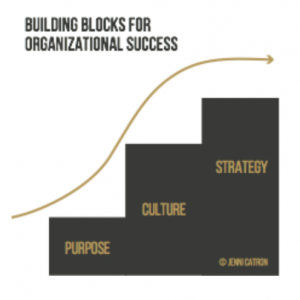You’ve heeded all the best practices. You’ve gone to all the right conferences. And yet if you’re like most leaders, you still feel like you’re struggling to get traction towards accomplishing your vision.
There is nothing more frustrating as a leader than to have a God-given vision burning in your heart, but the inability to see that vision become a reality.
We are wired to grow things. I don’t think this desire is wrong. I think it’s in our nature. God’s instruction in the book of Genesis post-creation was to “fill the earth and subdue it” – that’s an implication to grow.
The Reality of Broken Expectations
Play building blocks with any toddler, and they will default to build as tall as they can and as quickly as they can. If you want to witness a tantrum, stay long enough to see their haphazardly constructed tower come crashing down. Unfortunately, we tend to throw tantrums too when the plans we’ve set don’t meet our expectations.
To manage our expectations (and our tantrums), we need to understand the bigger picture of organizational life. We need to understand the essential building blocks that support the health and vision of our organization.
The Building Blocks for Organizational Success
As a certified strategic planner working with organizations on their strategies for growth, I repeatedly see two key areas overlooked while in the pursuit of growth. These two keys are foundational for organizational growth–purpose and culture.
The lifecycle of an organization can be depicted as a bell curve. Most aspire to travel “up and to the right” as quickly as possible. We’ll do everything within our power to resist the backside of the lifecycle, which depicts decline and, ultimately, death.

These are the foundational steps that support your upward right growth. Picture it as a set of stair steps undergirding the curve. Each one of these steps is a key facet of organizational development that we must steward well.
When the first two steps, purpose and culture, are given appropriate attention, strategy becomes a natural third step rather than an elusive target we can’t hit.
This graphic gives us a visual of the importance of these two steps that precede strategy. While the strategy is important, a consistent focus on purpose – why we do what we do, coupled with a commitment to our teams are essential for us to build the strategy.
Critical Factors That Could be Sabotaging Your Success
Leaders often call me when their repeated attempts at strategy are not resulting in growth. Their eyes are fixed at the top of the bell curve–that pinnacle of growth (however growth is defined for your business or ministry).
1. Without a keen sense of purpose, you will crush under the weight of responsibility as you scale-up.
Why do you do what you do?
Most organizations start with a strong sense of purpose. You painstakingly craft your mission, vision, and values. Your purpose is foundational, and all you have at the beginning. It is the biggest step that shoulders the most weight, so you do the initial work to define it. It’s the “why” behind everything you do.
The problem emerges as the organization grows. Demands of congregants or customers compromise your clarity of vision. New staff members bring new ideas. Opportunities arise that sound like a good idea, and before you realize it, you lack clarity of purpose.
2. If your culture is not healthy, your strategy is irrelevant.
Research tells us that a strong and healthy culture leads to greater employee engagement and more growth for your organization. And yet while 90% of leaders believe that an engagement strategy will have an impact on their success, only 25% of them have a plan.
Most of us understand that culture is essential. You’ve likely heard the quote, “culture eats strategy for breakfast…” We even subscribe to axioms, such as “people are your greatest asset.”
We give lip service to the importance of culture, but when we’re pursuing organizational growth, we focus our efforts on strategic plans. We set audacious goals and implement the systems and structures to support them. Then, we neglect to develop our teams and create environments in which they can thrive and accomplish the vision.
The second step of culture is comprised of leadership development as well as team dynamics. It starts with our personal growth as a leader and extends to how we cultivate the development of our teams. This step builds upon the purpose because you’re helping a team personally and collectively behave in congruence with the purpose of the organization.
3. Strategy only succeeds when we align it with purpose and culture.
Your strategy is important. We need to know how we’re going to accomplish our mission and vision, but this is where I often see leaders spend disproportionate amounts of time and energy.
In our eagerness to identify outcomes and accomplish audacious goals, we quickly pursue the strategies that will make those goals possible. Only to have spent significant budget on building a strategic plan that sits in a binder on a shelf and is the brunt of staff jokes.
I’ve heard story after story of leaders who have invested in strategic planning year after year with only unfulfilled plans and frustration to show for it. With a quick assessment of the organization, I typically identify problems in either or both of the first two steps.
Identifying Problems in Either or Both of the First Two Steps
Problem #1: We Drift From Our Purpose
In pursuit of a grand goal, the organization has lost touch with its core purpose. Author and organizational consultant Simon Sinek refers to this as a “just cause.” If an organization does not keep its just cause front and center, it will flounder.
When we’re inspired by what is working for another church or organization, we will mimic what they are doing. We hope to achieve similar results, only to find it ineffective and frustrating.
Afraid of disappointing an influential congregant or donor, we add programs that aren’t in alignment with our core purpose. This creates more complexity and a lack of focus organizationally.
Problem #2: We Neglect Our Team
As the whirlwind of organizational life accelerates, time spent in leadership development and team dynamics takes a back seat.
I experienced this personally in one of the organizations that I led. When I started, we were a small team of five, making it easy to spend time together learning, growing, and building trust.
As we grew, it seemed we didn’t have time for relational connection. Team building efforts or leadership training did not feel like the most valuable use of our time. The demands of a faster-moving organization racing towards growth squeezed out the very thing that provided life and energy to our team.
The weight of success will be crushing if we are not attending to our purpose and culture. If you trace the trajectory of an organization that has imploded, I’m confident you’ll find a crisis of purpose or a compromised culture beneath the rubble.
Your Success Steps Are Not Linear
As a point of clarity, some assume that the steps undergirding our organizational growth are linear; they are not. Attending to all three areas of organizational life is more like living on a stair climber. You are continuously moving up and down these steps adding necessary blocks that continue to support the growth and development of your organization.
Are there fractures in the purpose or culture of your organization? Access our free workbook, 5 Simple Steps to a Great Strategic Plan.
** 5 Simple Steps to a Great Strategic Plan **
Click Here to Download this Free Workbook to Get Moving Toward Your Goals
As leaders we are full of ideas and initiatives. We see potential and opportunity all around.
We can almost taste the outcome but oftentimes we get bogged down by how we’ll get from here to there.
The “how” can be overwhelming and discouraging so we give up on our goals or fail to build a plan to help us actually achieve them.
These five steps will get you and your team on the path to moving from ideas to action!
About the Author
Jenni Catron is a writer, speaker, and leadership coach who consults churches and non-profits to help them lead from their extraordinary best. She speaks at conferences and churches nationwide, seeking to help others develop their leadership gifts and lead confidently. As Founder and CEO of The 4Sight Group, she consults with individuals and teams on leadership and organizational health.
Jenni is the author of several books, including Clout: Discover and Unleash Your God-Given Influence and The 4 Dimensions of Extraordinary Leadership.


Leave Comment